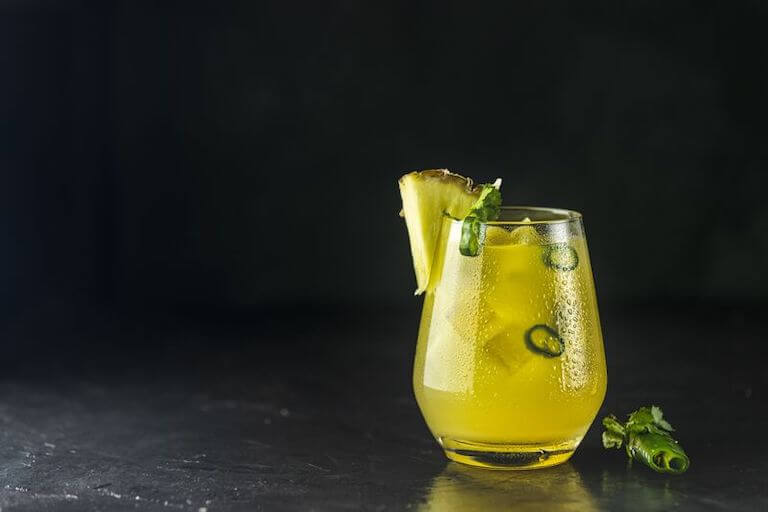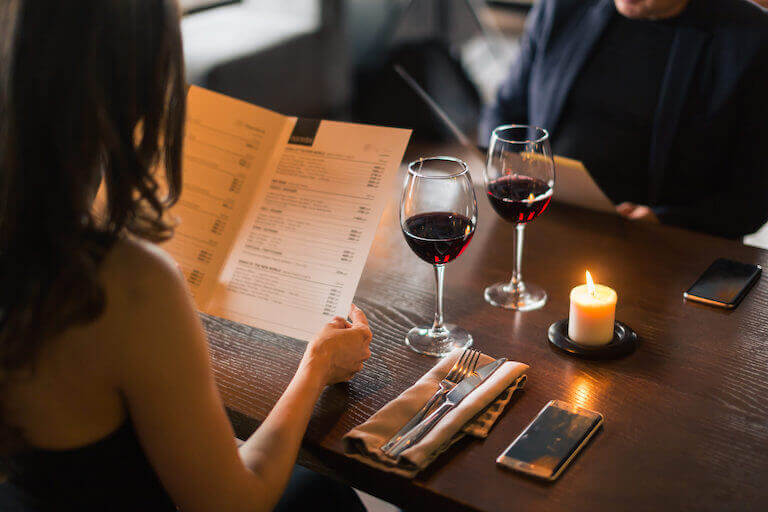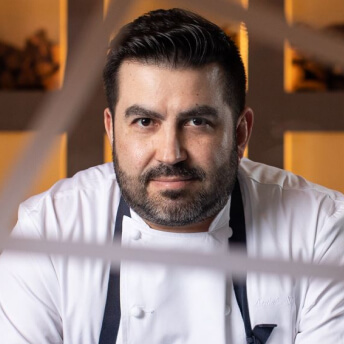Listen to This Article:
Flipping through the pages of a menu can feel like cracking open a new book. A good menu takes its reader by the hand, leading them this way and that, encouraging them to use their imagination and promising something delicious at the end.
Of course, there’s the business end of things as well. How can this document help the bottom line?
The stakes are potentially higher with a drink menu because beverages typically drive much of the profits in a restaurant. And just like a beautifully-written book can wind up in cobwebs on a shelf, so too can a drink menu be chock full of amazing concoctions but lack the marketing and aesthetics to reach its target audience and drive sales.
The good news is, your audience is clamoring for more. A study by the National Restaurant Association reported that 84% of adults aged 21-plus who drink wine, beer, or cocktails “say restaurants are a good place to learn about alcohol beverages that they haven’t tried before.”
So how do you design an effective drink menu to maximize your profits and deliver on your promise of a great experience? It takes a bit of education and planning.
What is Menu Planning?
A great drink menu does more than offer customers a simple list of libations. It incorporates elements of your business plan, marketing, graphic design, customer psychology, even storytelling. Whew.
As with a great restaurant menu, you’ll need to have a clear understanding of what your restaurant offers and what your target customer wants and expects from the experience. Menu planning includes being crystal clear on factors like type of cuisine, target clientele, price points, and how to categorize your dishes.
Your beverage menu will complement all of that. For example, the establishment that caters to families and offers a fun, easy night out might keep the drink menu basic and to the point for parents who have one eye on the menu and one on the children. Meanwhile, the cozy Italian place with dim lighting will likely present its clientele with a completely different style of menu, perhaps an extensive wine list.
Evaluate your food menu and what drinks would pair well with your offerings. This comes from an understanding of flavor profiles as well as complementary dishes. Do you want to offer a gin cocktail, with its citrusy notes, alongside seafood dishes? Do you have dishes that are salty, maybe featuring cured meats or hard cheeses, that would pair well with a slightly bitter negroni?

A drink menu should describe ingredients as well as flavor profiles.
How you describe products is also important. Consider how a martini can come off as a raucous party in a glass or as suave and sophisticated. There’s no wrong answer, but which are you selling?
Then there are the fonts, prices, and details like your address and contact information. Menu planning is so important that Auguste Escoffier School of Culinary Arts has an entire course within its online Hospitality & Restaurant Operations Management program called Menu Design and Management, with beverage menus as part of that.
7 Elements of a Great Drink Menu
A great beverage menu involves more detail than might at first be obvious. Here are seven components to take into consideration:
1. Separate the Food and Drink Menus
Give the drink menu its own spotlight so your beverages aren’t an afterthought.
When a server hands your customers a separate drink menu, that sends a subtle message that this is a choice to spend some time on, that these drinks are special in their own right and not secondary to the meal. When it’s separate, a drink menu will get more attention from customers, who will spend more time reading it than if it was included with the food menu.
2. Understand Your Customers’ Interests
What expectations do your customers have? Are they budget-conscious, here for an experience, interested in new and unique pairings?
This aligns with understanding your restaurant’s standout concept—what are you known for, what separates you from your competition? A thorough understanding of this will help you know what your customers’ hopes and expectations are, and then deliver.
3. Keep it Succinct for Easy Browsing
To help avoid decision fatigue, use Hick’s Law when designing a menu. Hick’s Law states that “The time it takes to make a decision increases with the number and complexity of choices.” This idea has found its way into everything from menu planning to website design and more.
You want to strike a balance between offering too many choices and too few. This helps keep the customer from becoming indecisive and frustrated, and it also allows you more control over the layout of your drink menu.
4. Organize Your Drinks Deliberately
Decide which drinks to group together; obviously, alcoholic and non-alcoholic drinks are in separate areas, but how else do you want to coordinate?
Often, a drink menu will start with the lightest drinks up top, progressing to heavier. This includes sparkling whites to full-bodied reds; ditto for beers and for spirits.
Additionally, the first drink on the menu is typically the most profitable and one of—if not the most—popular. Consider listing a couple of popular and profitable drinks at the top and again at the bottom, taking advantage of the way we scan a page.

Drink menus should offer customers information as well as a bit of storytelling.
5. Tell a (Short) Story About a Beverage
Where it makes sense, share some background or an origin story about a drink. Research suggests a story can increase a customer’s sense of authenticity about a menu item, particularly when the ingredients or dish is unfamiliar.
Is there a family link or is this drink made a traditional way in the country where it or you came from? Was it a happy accident, an unexpected discovery? Invite your customers into the story.
6. List the Ingredients in Cocktails
Customers want to know what’s in their drink, whether out of curiosity or because of food preferences or allergies. Here too, you have choices; you can provide a simple list or you can add some description. It may help to use adjectives like aromatic, full-bodied, silky, effervescent, crisp, smoky, creamy, and robust.
As with a food recipe, list the ingredients from the most used to the least.
7. Keep the Pricing Consistent
It might seem obvious, but when pricing drinks, remember to keep like with like. A pint of beer should cost the same as another similar quality pint. If another pint costs more, be sure to specify why, describing whether it’s premium, a craft brew, etc.
The same goes for cocktails. The drink menu should specify which cocktails use top shelf liquor and, when appropriate, describe the size of the drink.
Next, the big question: to include prices or not include prices? You might choose to omit prices to keep customers focused on the drinks themselves. If you do include prices, avoid dotted lines, which lead a reader’s eyes to the price, and also avoid columns, which encourage price shopping and comparison. You might also consider putting the prices in a lighter font and find ways to lay out the menu such that customers will see the price after reading the drink’s description.
The Ultimate Dish Podcast Episode 57
In this episode, we bring back André Natera, a professional culinary consultant, author, and a chef with over 27 years of experience, working alongside Michelin-starred chefs.
Menu Design Basics
Your menu design will reflect the vibe of your restaurant, so a layout that works for the chain restaurant serving families on a budget is naturally going to look and feel different than a special occasion, Michelin starred restaurant.
Still, a few graphic design elements remain consistent:
- Remember that “white space” is as important as text and graphics
- Fonts are important for readability as well as messaging; limit your fonts to three
- Decide whether you want photos (this again depends on the vibe of the restaurant)
- Know your color scheme
It also helps to understand how readers approach a menu. Although conventional wisdom says customers focus on a “sweet spot” on the right side of the page, at least one study shows that the sweet spot doesn’t exist, and that people instead read a menu like a book, from left to right and top to bottom. You can test these theories in your restaurant by playing with your menu design and keeping track of orders; although a variety of elements factor into ordering decisions, you might pick up on patterns.

It’s important to understand what your customers want from your restaurant experience as well as how they read a menu.
Want to Know More?
There’s a lot more to menus than meets the eye, and a culinary education can help you tackle the intricacies.
One way to find out more about hospitality marketing, cost control, and menu design is by enrolling in a Food Entrepreneurship program. Menu design and management is baked into many parts of Escoffier’s curriculum.
Students can explore the skills food entrepreneurs may need to prepare for careers starting or running small food businesses. They can also get an opportunity to explore digital and traditional marketing concepts, business planning methods, and core culinary principles and techniques.
Contact us to find out how to get started.
HERE ARE SOME OTHER ARTICLES YOU MIGHT LIKE:
- How to Improve the Ambiance of Your Restaurant
- How Much Money Can Restaurants Make?
- How to Build a Delivery-Friendly Menu


